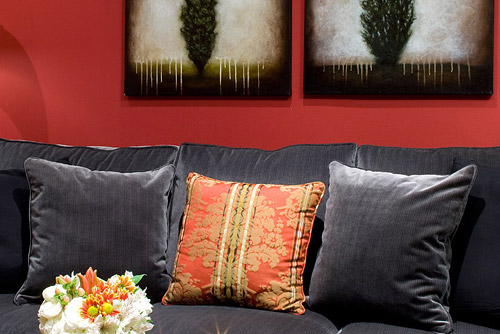If you intend to hire a designer, there are some important things to take into consideration to get the most out of this relationship! The significance of this struck me when I stumbled upon an interesting article in the National Post, written by Pedro Arrais titled “How to be buddies with your designer”, published March 26, 2010.
Arrais notes that the biggest challenge for designers is not the job of interior design but actually dealing with the clients!
Here are some of the things he listed as “common issues that designers report:”
Ignore Advice: Strangely enough, some people will hire an interior designer to give advice on a renovation then ignore the recommendations.
I can truly say, that has happened to me. I have been in practice almost 19 years and every now and then there is a client who really doesn’t want to hear what I have to say but just wants me to agree to their ideas. And some clients really do have great ideas but then there are the few who should heed the advice of professionals!
Lack of Trust: Homeowners seek out designers because they feel a professional can help them with their interior designs. But if they have any doubts, the projects can end up being futile exercises.
Trust is a big thing when you are committing a lot of money to something you may not even be able to visualize completely. It’s important, as a client, to review pictures of things you like and to invest in scaled drawings that you can review with the designer to really understand what you are getting. These will allow you to think about the height, width, style, etc of whatever you are doing so that you get exactly what you want.
It’s far cheaper to pay for these than to have to remove a built-in or piece of furniture that wasn’t want you thought it would be.

Being colour-phobic: “Canadians are afraid of colour,” says J.C. Scott, senior design partner of J.C. Scott Design Associates. “They frequently judge — and reject — a colour based on a paint chip or a small test patch on a wall. I encourage clients to reserve judgment until after the room is finished and art is hung.”
Excellent advice, Mr. Scott!
Expect immediate results: “Before taking on a project, it’s critical to not underestimate the time involved. Building and renovations all take time and delays are common. In extreme cases, couples have been driven to divorce due to the stress. “A major kitchen renovation can easily take up to a year to complete,” Ms. Salamon says. “Delays can happen at different stages of a project.”


There is little point in getting upset over the amount of time it takes as its best to do it well the first time out, even if it takes a little longer. And a good contractor should prepare you in advance of the timelines and potential delays so you can be mentally prepared.
Making changes after the design is complete: Everybody’s concerned about keeping to a budget. Change to a design at the inception is expected, but when changes are requested after the design is finalized, you get headaches.
Take the time to plan. That is the point of having a designer. The designer’s fee upfront will be higher before the project begins as they prepare the main ideas and drawings for the space. Make your changes at this stage and layout a critical path with your designer so you can be aware of when things happen within the building process.
As the process moves forward and all the planning is done, the designer’s role diminishes and the contractor’s role increases. But only if you are completely thorough in the beginning.
Not enough lighting: Most people underestimate a room’s lighting requirements. Don’t rely on pictures from home fashion magazines… A professional photographer augments a room’s lighting with his own to make pictures more effective. What looks good in one setting may not suit every kitchen.
An excellent point! Lighting is so important as it makes the difference not only to how a room feels but to how functional it is. This should always be a budget line in any reno as it will significantly enhance the value and mood of a space.
Not size-appropriate: When people downsize, they should consider replacing oversized sofas that overpower a room. Purchase furniture that is size-appropriate for the space. Hint: You know the piece is too large when it won’t fit through the door.
“Measure and mask out the outline of the new piece on the floor before you bring it home from the store,” advises Tony Martin, owner of Monarch Furnishings. “Walk around it and make sure it’s not in the way of doors, etc.” If possible, bring home a fabric swatch, as well, because the lighting in a store is very different from a home environment.
Indeed, Mr. Martin is right…it’s best to consider a piece fully before purchasing. Like many designers, we prefer to help our clients before they even get to this point as it becomes our responsibility to get the right size and colour for you. This eliminates many trips to the store and will ensure that the new piece is right. But you must involve us before you purchase the piece, so we can make more informed decisions.
One addition to Mr. Arrais’ article… I would suggest that it’s best to work with your designer as a partner in the project.
The way I look at, we are in it together. My job is to get and develop your vision and your job is to provide me with that vision as best you can. You don’t need to use fancy design words, I don’t care about that, just tell me who you are and what you want!
I want the same thing you do: a beautiful space that functions well, has good design elements and it reflects who you are!

